Wei-I Lee (ed.)
Voices of Photography no.30 - U.S. Aid Visuality: The JCRR Issue
Voices of Photography no.30 - U.S. Aid Visuality: The JCRR Issue
Couldn't load pickup availability
In this issue of VOP, we revisit the era of U.S. aid, a period that was of utmost importance to Taiwan’s post-war social and economic development, and explore Taiwan’s much forgotten but crucial visual journey during this era ── the visual archives of the JCRR.
Established in 1948, the Chinese-American Joint Commission on Rural Reconstruction, or the JCRR, is widely known for the implementation of various land reform and agricultural policies, such as the “375 rent reduction” and “Land-to-the-tiller” programs. Hence, the Commission is considered an important cornerstone to laying the foundations of the “Taiwan Experience” in the 20th century. That said, very few are aware that this U.S. aid organization specializing in agricultural economics was also closely associated with the American propaganda mechanism during the Cold War, and had in its possession countless photos, slides and movies, and produced various images, charts, pamphlets and posters. All these contributed to the formation of the post-war “Taiwan (Visual) Experience”, deeply influencing the development of our visual culture.
How exactly did the Cold War and U.S. aid shape Taiwan’s image and visual perception? This issue’s special feature uncovers the little-known visual activities from the U.S. aid era by investigating the collection of JCRR’s first-hand photo files, negatives, images, films and documents, and traces this important journey of post-war Taiwan photography and U.S. aid visuality that has gradually faded from people’s minds.
Among them, Lee Wei-I examines the historical clues and visual texts of the JCRR, and explores the production of the U.S. aid photographic archives, following the traces of the members of the “JCRR Photography Unit” and the trails of U.S. aid visuals during the Cold War from images and photography to films. Tsai Ming-Yen analyzes the diverse visual manifestations, such as languages, ballads and comics, contained in the semimonthly publication Harvest, which was co-founded by the JCRR, the U.S. Economic Cooperation Administration, and the U.S. Information Service in 1951, presenting a new take on the ideological and political struggles that were hidden beneath the pages of this agricultural publication that could also be said to be the most representative publication of the post-war era. Yang Zi-Qiao looks back at the early agricultural education and propaganda films, and analyzes the discourse and sensory deployment utilized by the JCRR in the development of a post-war Taiwan and the possibilities of the “avant garde” documentary films from the Cold War period through the audio-visual strategies gleaned from director Chen Yao-Chi’s documentary project that was funded by the JCRR. At the same time, Houng Tung-Hung checks out the aerial photography taken by the JCRR in the 1950s for land and forest surveys, and uncovers the origins of Taiwan’s aerial photography with U.S. aid, giving readers a rare glimpse at post-War Taiwan’s aerial landscape photographic archives.
In addition, we will explore the photographic archives of Yang Chih-Hsin (1923-2005), a former photographer who was born during the Japanese colonial period and worked for the JCRR and Harvest, unearthing negatives and documents kept away in the ammunition and photo-paper box that had stayed sealed for more than half a century. This feature presents important files of Yang during his time with JCRR, and photographs taken and written texts produced during the U.S. aid era but were never made public. We go through the visual archives enclosed in what he called a “time capsule”, shedding light on the diversity of his photography career, while reflecting on the complex historial sentiments towards “U.S. aid photography” at the same time.
Lee Li-Chun continues the discussion on scientific photography in his column, exploring the interactive dialectics between the seen and the unseen through the observation technology of astrophotography in the late nineteenth century. Hsieh Pei-Chun focuses on the history of the technology behind remote transmission of visuals and examines the power, knowledge and aesthetics that underlies contemporary digital visual regime. Finally, this issue’s “Photobook Making Case Study” is led by the printing experts at Japan’s Benrido, a workshop that is renowned for its mastery of the collotype printing technique.
Through the large collection of photographic archives presented in this issue, readers will see that there remain many stories on the photography process in the U.S. aid era and various types of visual experiences in Taiwan’s history that are waiting to be unearthed. We thank our readers for staying with VOP for the past decade and we look forward to another ten years of exploring the world of images with you.
Author: Wei-I Lee (ed.)
Editor: Wei-I Lee, Lili Chien, Hanyu Chen, Yosuke Ishizuka
Publisher: VOP Co., Ltd.
Contributor(s):
Year: 2021
Pages: 136
Language: English and Chinese
ISBN:
Size: 19 x 25.5
View full details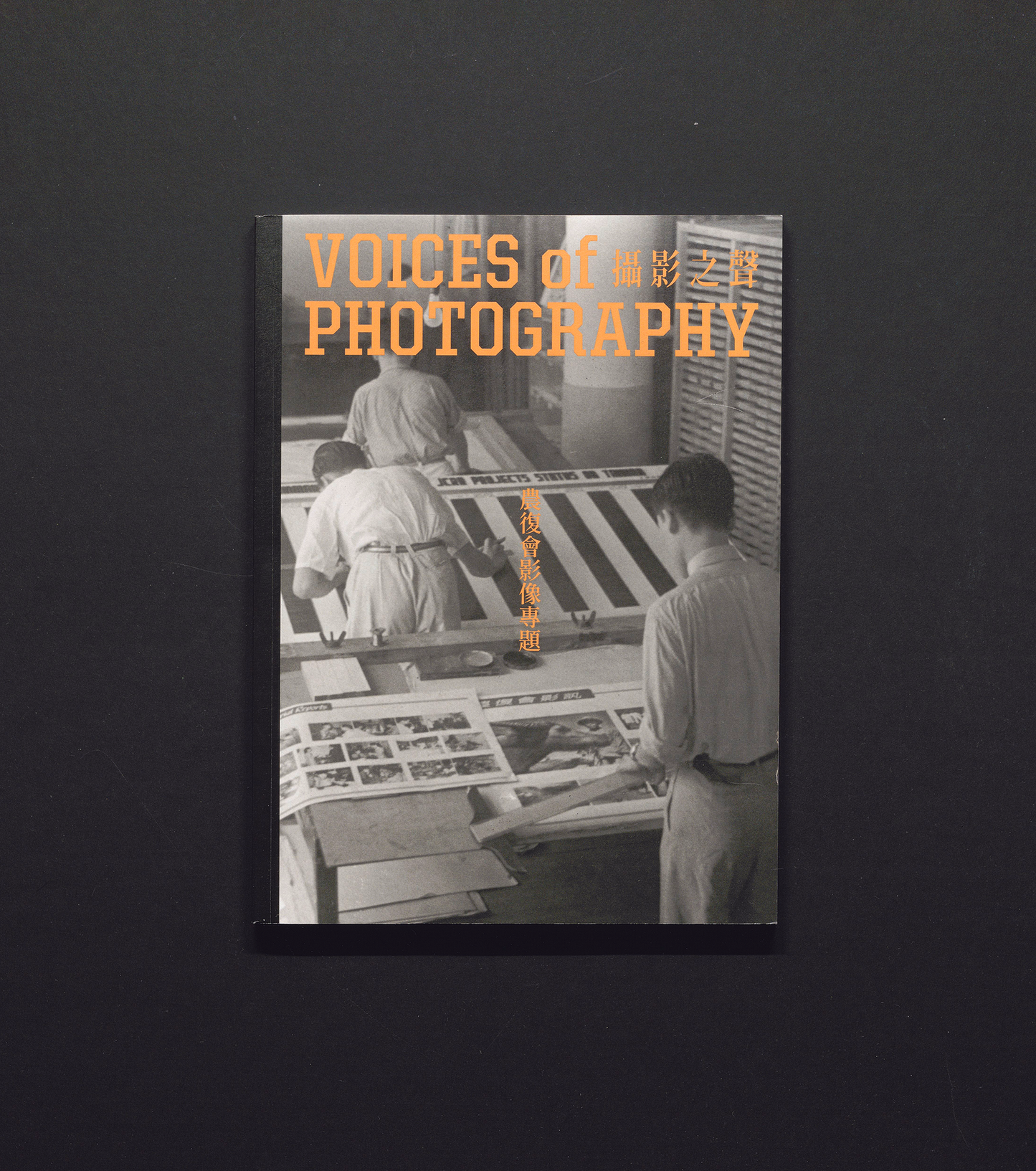
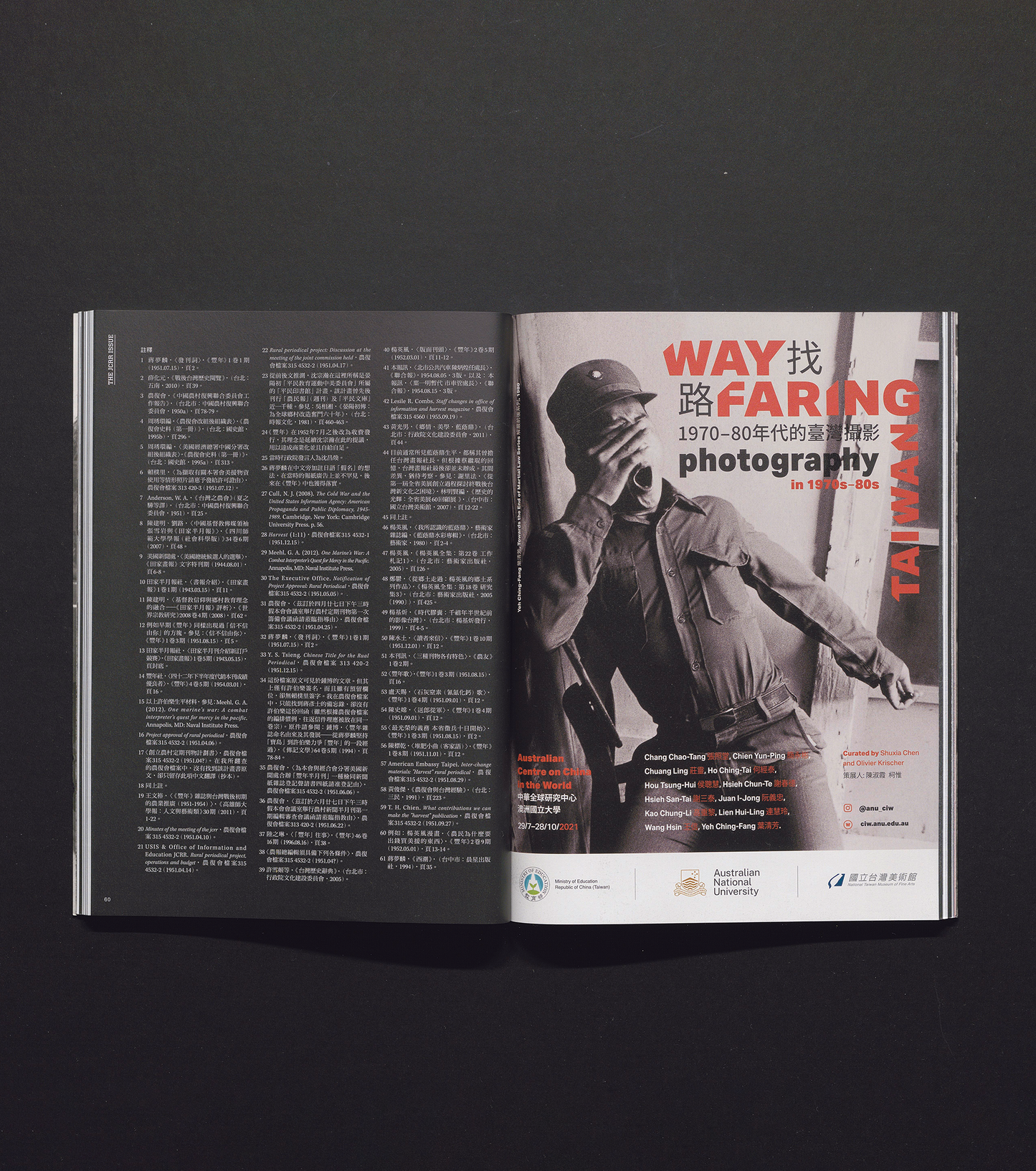
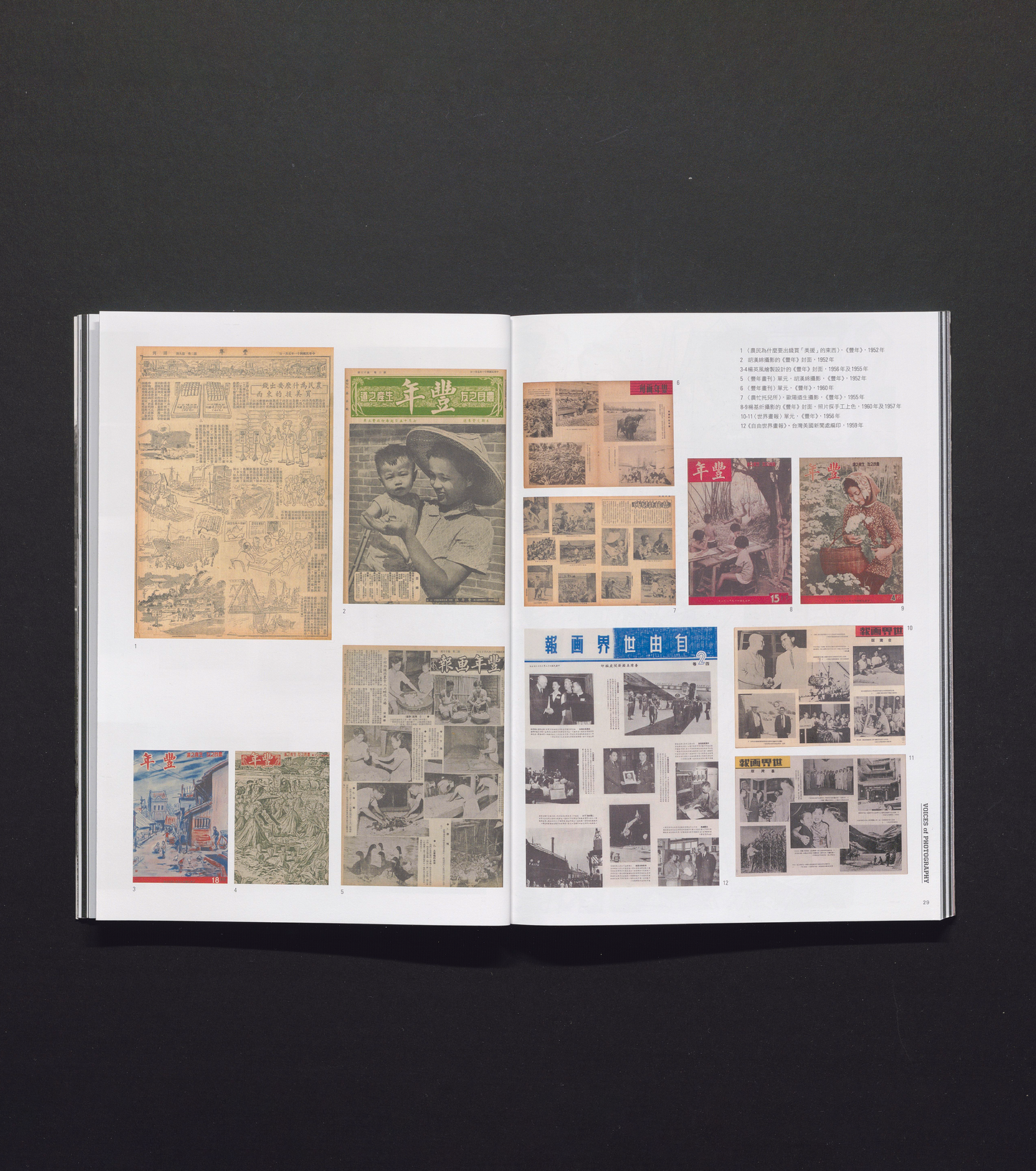
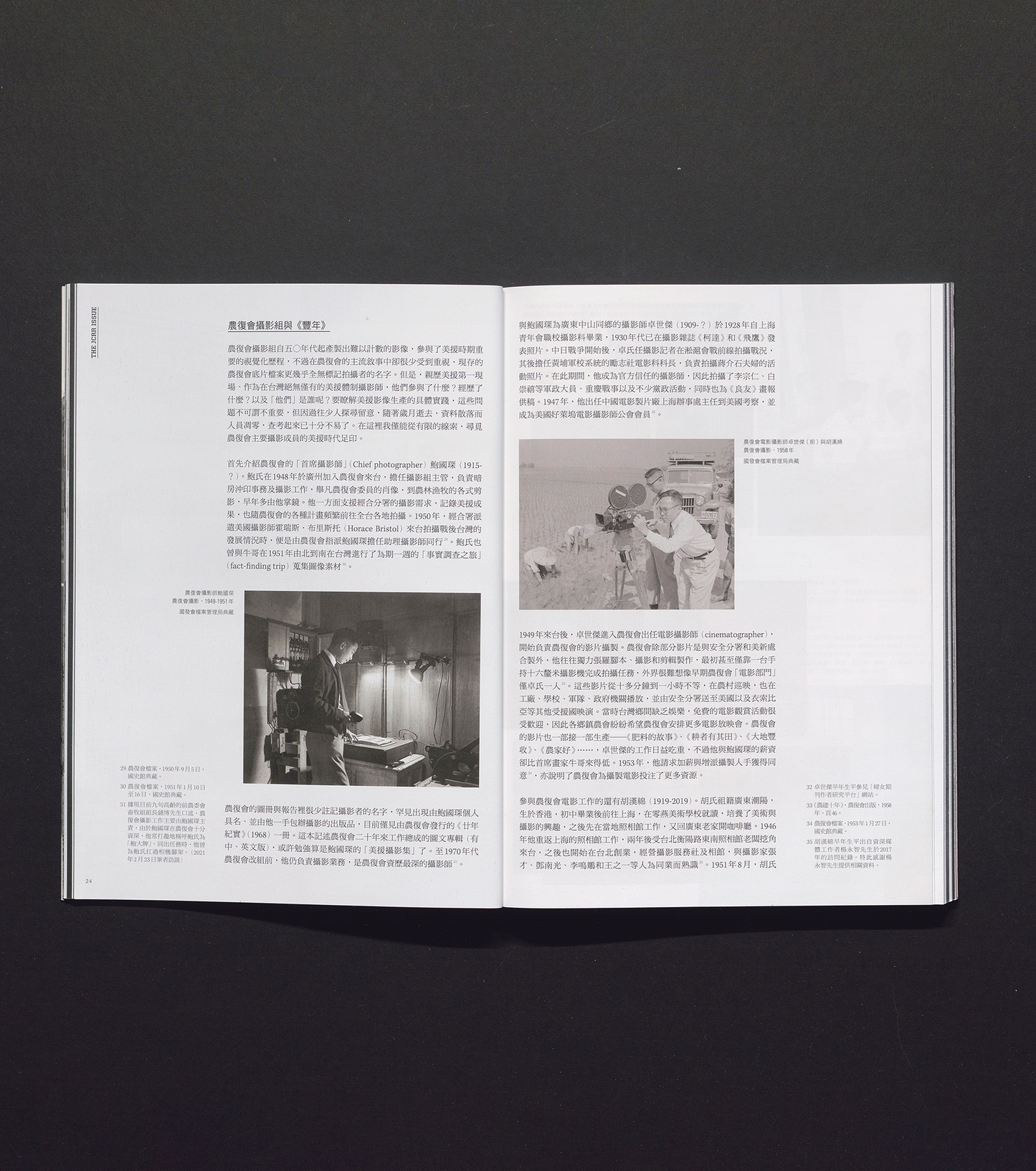
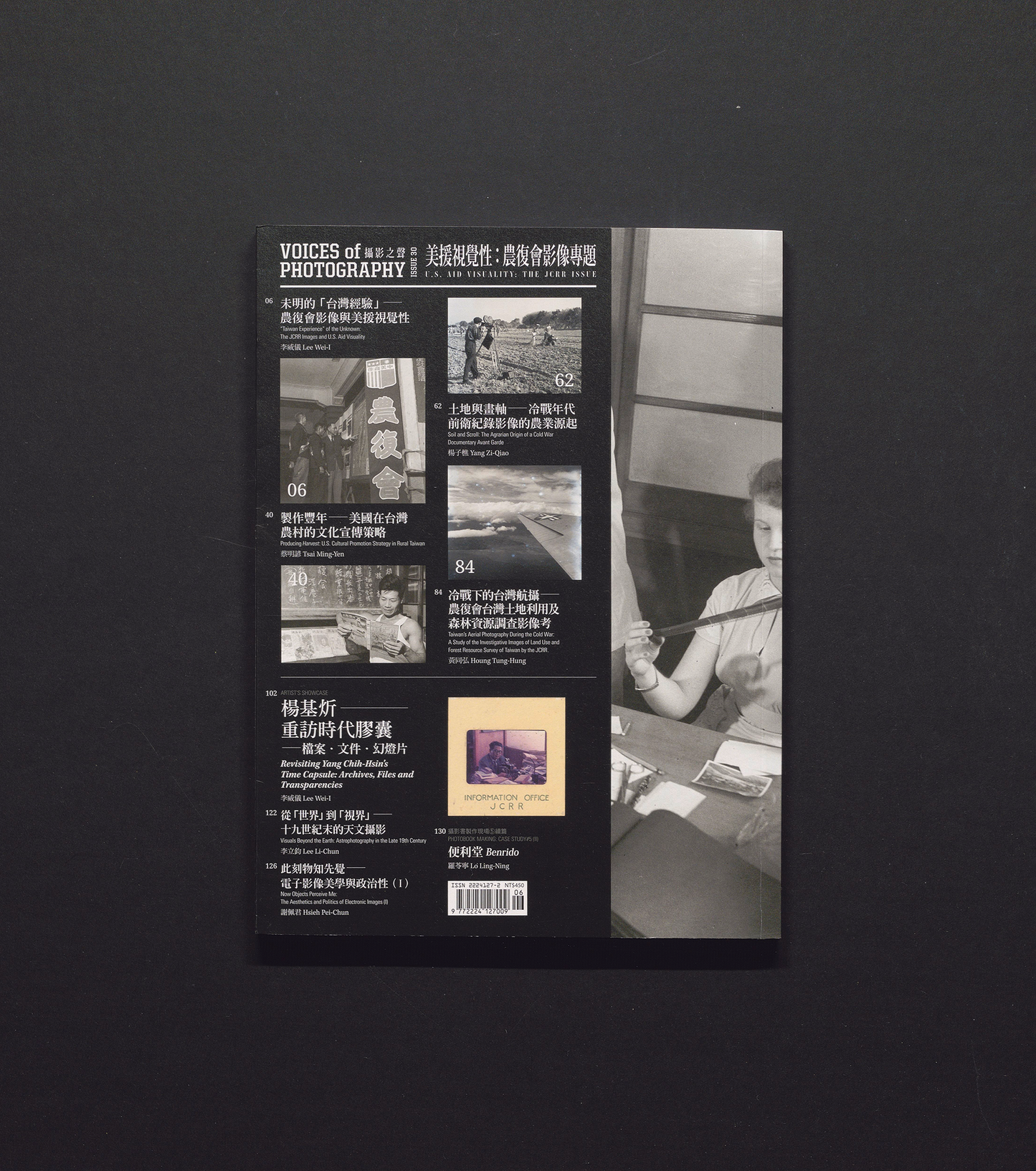
OTHER BOOKS
—




